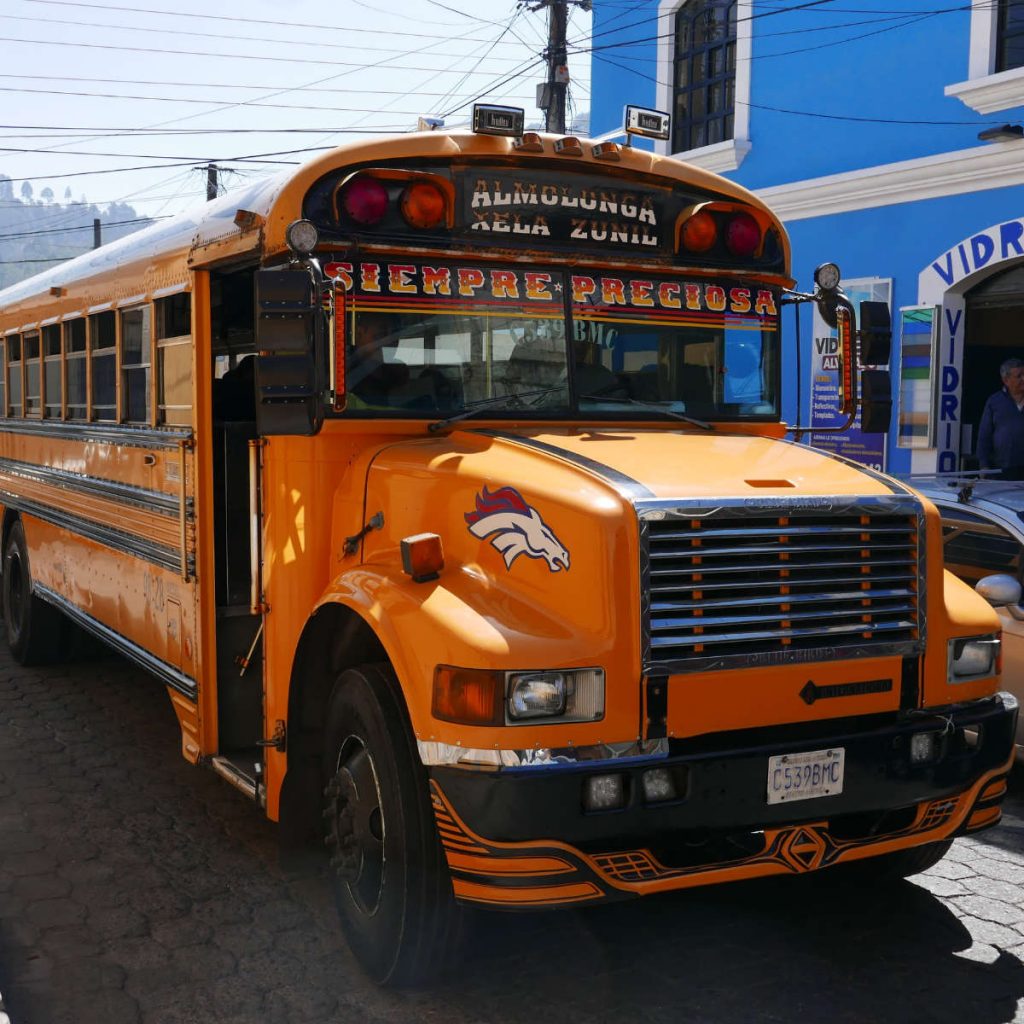Nobody shouts. Nobody curses. The bus driver announces something in Spanish. My neighbor sighs. Again a breakdown. The driver’s assistant, in his early twenties but already in a slightly corpulent physical state, starts to sweat even heavier. Takes off his shirt and knows some serious work is ahead of him.
We are somewhere on the long road between Masaya and Esteli, in heartland Nicaragua. It should only be a one-hour drive to Tipitapa, where people told me to change onto another bus. But my current chicken bus doesn’t cooperate, obviously. So the driver and his assistant get out again, open the hood and start to repair the goddamn thing. Themselves.
Made in America
Go with the flow
Before I went to Central America I had never heard of a chicken bus. So I was too scared to take one to make it over the Mexico-Guatemala border. But once you are in Guate, there really is no alternative. You just have to go with the flow. And once you have done it once, you know the drill and become confident you can master this trick again and again.
For all the virgin newbies who don’t know what to expect, here is the lowdown in my completely self-created ten rules for chicken bus travel:
- You only pay in the bus, during the ride
- Payment in cash, with the ayudante (assistant). Cards? Good joke!
- They are cheap. For 2-3$ you can expect to be driven for hours on end
- You can hop on and off everywhere
- They are extremely slow (see previous point for explanation)
- Try to hop on at a bus station (see later on), the buses can fill up quickly
- Keep your luggage close to you, and use extra locks. Preferrably use carry-on luggage, my big backpack proved to be ridiculous (and you might pay for an extra seat)
- Squeeze your ass. These things were made for children, and of course they cram the same amount of adults on those benches!
- That’s why you should try to avoid the aisle seats, they are the short straw. Lots of overhanging body parts in those seats…
- The direction of the bus is usually advertised on the bus. Or just ask. But assistants will throw themselves upon you once they see a potential customer, especially when a foreigner
Once you have mastered these basics, you will at least get from A to B. Sometime. If there are no malfunctions. My ride from Masaya to Esteli in the end took five hours for the around 100 miles. Including the two unplanned stops of course…
Surprises
So are they always a joy? No. Are they always safe? No, and I am not only talking about traffic safety of course. But common sense will get you quite far. Are they crazy? Hell yeah, they put heavy luggage onto the roof whilst in motion! Are they mandatory for travellers? Absolutely. If you wanna feel like a local, travel like a local!

